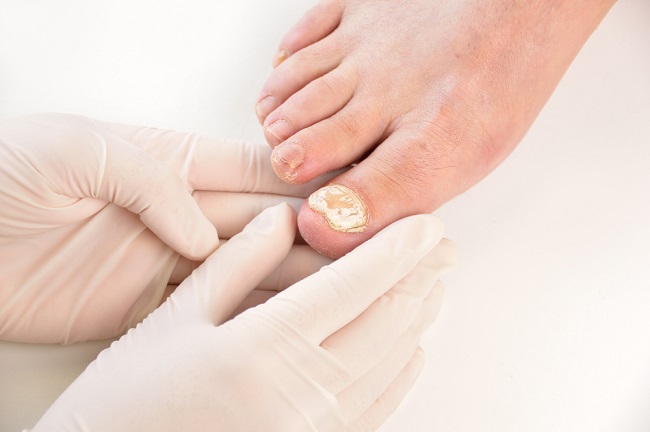Altitude sickness or altitude sickness is a collection of symptoms that appear when a person climbs too fast to a certain height. Some of the symptoms are hard to sleep,hard to breathe, and headaches.
At an altitude of more than 1,500 meters above sea level (masl), air pressure begins to decrease and oxygen is running low. That is why, someone who is at this altitude must give his body time to adapt.

Altitude sickness or mountain sickness occurs when the body does not get enough time to adapt to changes in air pressure and oxygen levels at altitude. As a result, appear disorders of the nervous system, muscles, lungs, and heart.
Type of Altitude Sickness
There are 3 types of altitude sickness. Here is the explanation:
- Acute mountain sickness (AMS), which is the mildest and most common form of altitude sickness.
- High-altitude cerebral edema (HACE), which is a buildup of fluid in the brain that causes the brain to swell and not function normally.
- High-altitude pulmonary edema (HAPE), which is a buildup of fluid in the lungs that causes impaired function of these organs. This pulmonary edema can develop from HACE or occur on its own.
Causes of Altitude Sickness
Altitude sickness occurs when a person is at an altitude of more than 3,000 meters above sea level. At this altitude, the air pressure will decrease and oxygen levels will decrease. For someone who is not used to heights, his body needs time to adapt to these conditions.
Altitude sickness symptoms appear when the body does not get enough time to adapt to changes in air pressure and oxygen levels at altitude. Some conditions that can increase a person's risk of experiencing altitude sickness are:
- Live in the lowlands
- Have you experienced altitude sickness before?
- Climbing too fast (more than 300 meters per day)
- The hiking trails are difficult and require a lot of energy
- Suffering from disorders of the heart, lungs, or nervous system
Symptoms of Altitude Sickness
Altitude sickness symptoms usually appear when a person is at an altitude of more than 3,000 meters above sea level. Symptoms can appear gradually or suddenly with mild or severe severity, depending on the speed at which a person climbs and the height reached.
Some of the common symptoms of altitude sickness are:
- Hard to sleep
- Fatigue
- Nausea and vomiting
- Headache
- Heart beat
- Hard to breathe
In severe cases, altitude sickness can cause the following symptoms:
- Blue skin (cyanosis)
- Chest feels like it's being pressed
- Bleeding cough
- It's hard to walk
- Dazed and irritable
- Loss of consciousness
Altitute Sickness Diagnosis
People who experience the above symptoms and complaints need to be moved to a lower place. That way, the complaints and symptoms they experience will be reduced.
Altitude sickness can be diagnosed by a doctor by asking about the symptoms experienced by the patient and performing a physical examination, including checking breath sounds using a stethoscope.
In patients with altitude sickness, there is a buildup of fluid in the lungs so that additional abnormal breath sounds will appear.
If the symptoms experienced by the patient are severe, the doctor will perform a CT scan and MRI to see if there is a buildup of fluid in the patient's brain.
First Aid on Altitude Sickness
Immediately descend or take people who experience symptoms of Altitude sickness to a lower altitude. It's important to remember, don't try to climb any higher even if your symptoms are mild.
While bringing the patient down to a lower altitude, the following first aid steps can be taken to relieve the symptoms of Altitude sickness:
- Loosen the patient's clothing and allow sufficient space for the patient to breathe.
- Make sure the patient drinks lots of water so that he does not become dehydrated.
- Give paracetamol or ibuprofen for headaches.
- Do not give alcoholic beverages or sleeping pills to sufferers.
If the patient is on the mountain and his condition is not possible to get down, contact the evacuation officer to bring the patient down.
While waiting for help to arrive, keep the patient's body temperature warm, limit the patient's physical activity and let him rest. Use portable hyperbaric chamber (portable high-pressure airbags) when these are available and trained personnel are available to use them.
Immediately take the patient to the doctor if symptoms persist after being at lower altitudes, even though the symptoms are mild. If the symptoms of Altitude sickness at altitude are severe enough, an examination is still needed even though the symptoms have subsided when descending.
Altitude Sickness Treatment
Symptoms of Altitude sickness will usually subside after descending to an altitude of 300-600 meters lower than the previous altitude. In most cases, the symptoms will go away completely within 3 days.
In severe Altitude sickness or if HACE or HAPE occurs, especially at an altitude above 1,500 masl, the patient must descend to an altitude below 1,200 masl and seek medical attention.
One of the treatments that will be done by doctors to overcome Altitude sickness is to give medicines, such as:
- Acetolazamide, to relieve the symptoms of shortness of breath
- Dexamethasone, to reduce swelling in the brain
- Nifedipine, to relieve chest pain and shortness of breath
- Phosphodiesterase inhibitors, to increase blood flow to the lungs
In addition to the drugs above, the doctor will also provide breathing aids and oxygen therapy to relieve symptoms of altitude sickness.
Altitude Sickness Complications
Altitude sickness is a very dangerous condition. If not treated immediately, patients can experience serious complications, namely:
- Fluid buildup in the lungs (pulmonary edema)
- Brain swelling
- Coma
- Death
Altitude Sickness Prevention
If you want to climb a mountain or go to a highland, as much as possible know the altitude of the area to be visited. Also find out what the symptoms of Altitude sickness can be, along with first aid. If you notice the symptoms early and the symptoms do not go away after 24 hours, immediately descend to a lower altitude so that the symptoms do not get worse.
The best way to prevent Altitude sickness is to acclimatize, which is to give the body time to adapt to the conditions at altitude. The method is as follows:
- Make the climb gradually, no more than 300 meters per day.
- Rest 1-2 days for every 600 meter hike. Take regular breaks if you climb a mountain with an altitude of more than 2,400 meters above sea level.
- Do enough practice before climbing the mountain and make sure you are able and have practiced to descend the mountain quickly.
- Drink lots of water to prevent dehydration and eat foods high in carbohydrates.
- Don't smoke, don't drink alcohol or caffeinated drinks, and don't use sleeping pills while climbing mountains.
- Get a medical check-up with your doctor before going on a mountain hike, especially if you don't have any previous climbing experience.









